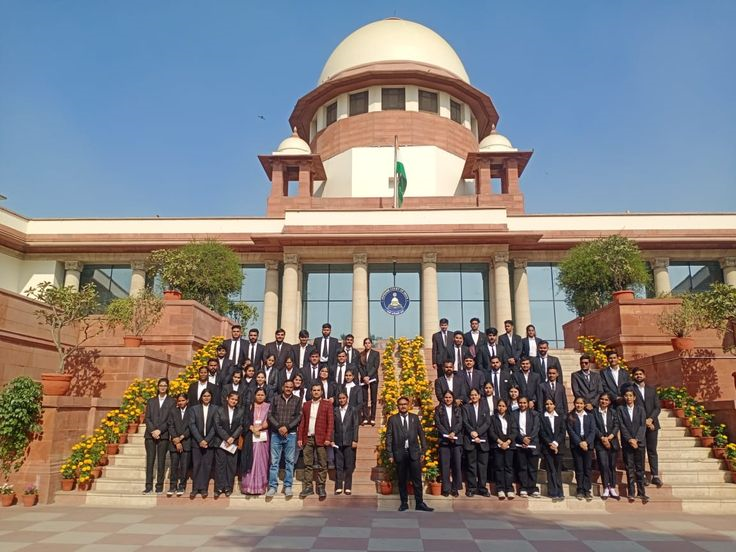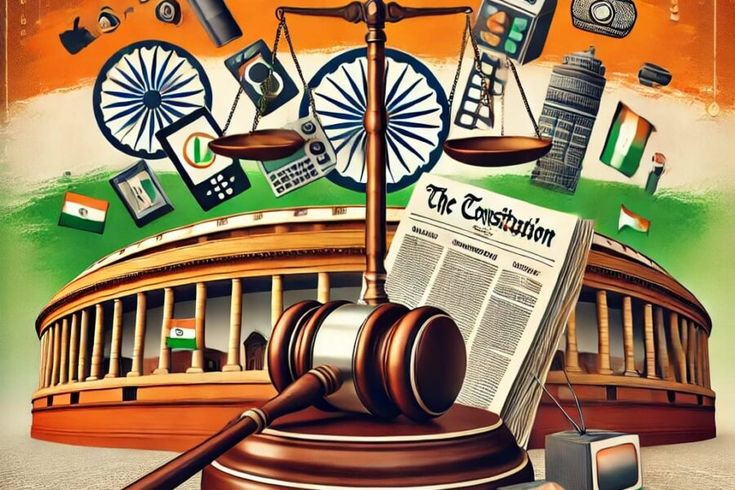Constitutional Framework and Importance
In India’s federal structure, legislative relations between the Union (Centre) and the States are a critical aspect of governance. The Constitution of India, under Part XI (Articles 245–255), provides a detailed framework for the distribution of legislative powers, ensuring that both levels of government can function efficiently while maintaining national unity. This distribution reflects India’s quasi-federal system, balancing state autonomy with the needs of a strong central authority.
The purpose of defining legislative relations is to prevent conflicts between laws enacted by the Parliament and the State Legislatures. The Constitution achieves this through the Union List, State List, and Concurrent List (Seventh Schedule), empowering different levels of government to legislate on matters within their competence. It also provides mechanisms for resolving disputes, promoting cooperative federalism, and ensuring that governance remains aligned with constitutional principles.
Legislative relations are significant because they impact policy-making, implementation of laws, and the overall functioning of democracy. Understanding this framework is essential for grasping how India maintains harmony between the Centre and States while protecting both national interests and state autonomy.
Distribution of Legislative Powers
The Constitution prescribes a threefold classification of legislative subjects under the Seventh Schedule:
- Union List (Article 246(1))
- Contains subjects on which only Parliament can legislate, such as defense, foreign affairs, atomic energy, and currency.
- This ensures that national issues remain under centralized control, preventing fragmentation of policy on matters critical to sovereignty.
- State List (Article 246(3))
- Covers subjects under the exclusive legislative competence of State Legislatures, including police, public health, agriculture, and local governance.
- This empowers states to address regional needs and ensures that local issues are legislated and implemented effectively.
- Concurrent List (Article 246(2))
- Includes subjects where both the Parliament and State Legislatures can legislate, such as criminal law, marriage, bankruptcy, and education.
- In case of conflict between Union and State law on a concurrent subject, Union law prevails (Article 254), maintaining national consistency while allowing states to innovate.
This division ensures clarity in law-making, reduces conflicts, and upholds the federal principles embedded in the Constitution. It also allows for flexibility, enabling both the Centre and States to respond to local and national priorities.
Parliamentary Powers and Emergency Provisions
The Constitution also provides Parliament with certain powers that can impact State legislative competence, particularly in situations of national importance or emergency:
- Residuary Powers (Article 248)
- Parliament alone can legislate on subjects not enumerated in any of the three lists. These powers ensure that emerging issues can be addressed at the national level.
- Emergency Legislation (Article 250)
- During National Emergency, Parliament can legislate on subjects in the State List. This allows uniformity in law during crises and maintains national stability.
- Legislation on State List Subjects (Article 249)
- Parliament may legislate on a State List matter if the Rajya Sabha passes a resolution by a two-thirds majority that it is necessary in the national interest.
- Such provisions reflect a balance between federal autonomy and national priorities.
- Power to Create All-India Services and Institutions (Articles 312, 314)
- Ensures coordination between Centre and States in administration, indirectly influencing legislative relations.
These provisions allow Parliament to intervene in state legislative matters in specific circumstances, ensuring that the balance of power is maintained while addressing the needs of national governance.
Mechanisms for Resolving Conflicts
Despite clear divisions, conflicts between Union and State laws can arise. The Constitution provides judicial and administrative mechanisms to resolve disputes:
- Doctrine of Repugnancy (Article 254)
- When a state law conflicts with a central law on a concurrent subject, the central law prevails, unless the state law has been reserved for the President’s assent and is approved.
- This ensures that national interest is maintained without completely undermining state autonomy.
- Judicial Review
- The Supreme Court has the authority to adjudicate disputes regarding legislative competence under Articles 131 and 32.
- Landmark cases like State of West Bengal v. Union of India (1962) and T.K. Rangarajan v. Government of India (1982) demonstrate how the Court ensures compliance with constitutional boundaries.
- Inter-Governmental Consultation
- Mechanisms like the Inter-State Council (Article 263) and NITI Aayog facilitate dialogue between the Centre and States, reducing friction and promoting cooperative federalism.
Through these mechanisms, India maintains a balance between central authority and state autonomy, ensuring that legislative relations support national unity and governance efficiency.
Contemporary Issues in Legislative Relations
In modern India, legislative relations face several challenges:
- Centralization vs. State Autonomy
- There is a perceived trend of the Centre encroaching on State subjects through ordinances, residuary legislation, or invoking emergency powers.
- Political Conflicts
- Differences between political parties in the Centre and States can result in disputes over legislative competence, often requiring judicial intervention.
- Emerging Subjects
- Technology, cyber laws, environment, and data protection are new areas not explicitly mentioned in the original lists, requiring a careful balance between Union and State legislation.
Despite these challenges, India’s constitutional framework, judicial interpretations, and cooperative mechanisms ensure that legislative relations remain functional and resilient.
Mnemonic to Remember Legislative Relations
Use the mnemonic “U-S-C-P-J” to recall key aspects:
U – Union List (Parliament exclusive subjects, Article 246(1))
S – State List (State exclusive subjects, Article 246(3))
C – Concurrent List (Both Centre and State, Article 246(2))
P – Powers of Parliament (Residuary, Emergency, Article 248, 249, 250)
J – Judicial review and dispute resolution (Supreme Court under Articles 131, 32)
About lawgnan
To deeply understand the legislative relations between the Centre and the States in India, visit Lawgana.in. Learn how the Constitution divides powers under Articles 245–255 and the Seventh Schedule into Union, State, and Concurrent Lists, maintaining the balance of federal governance. Discover how doctrines like repugnancy, judicial review, and emergency provisions shape legislative authority and resolve disputes. Lawgana.in simplifies complex constitutional relations, offering clear insights for law students, judiciary aspirants, and UPSC candidates. Strengthen your understanding of India’s federal framework, cooperative federalism, and legislative harmony today with Lawgana’s detailed constitutional analysis.




